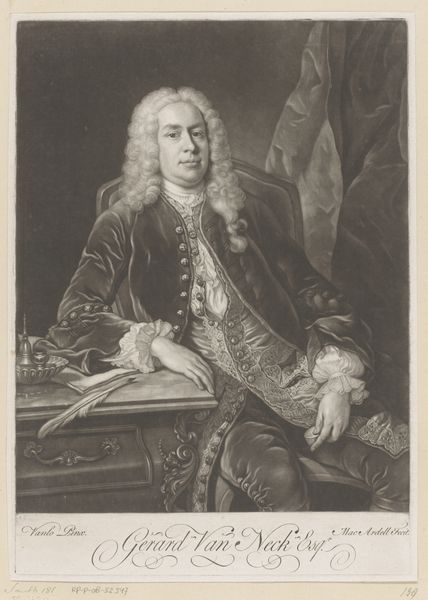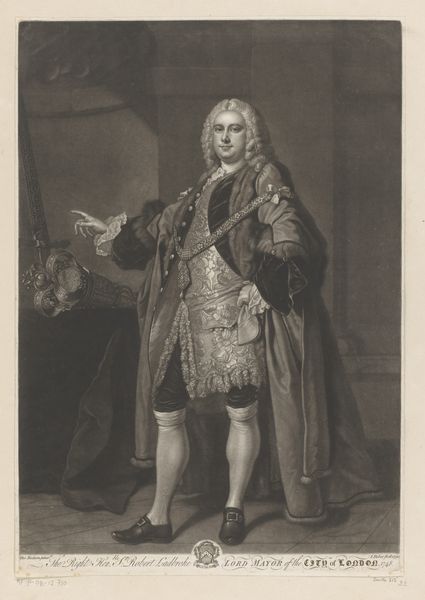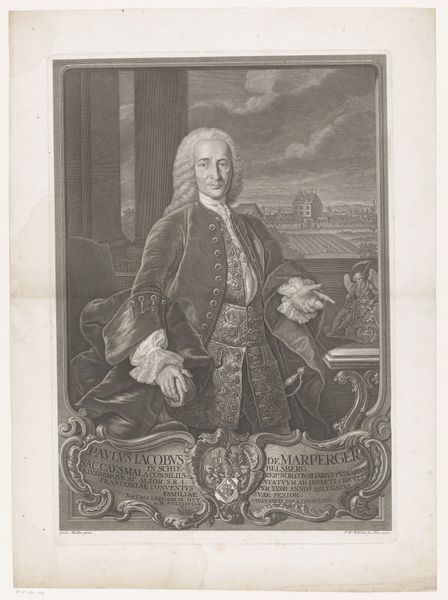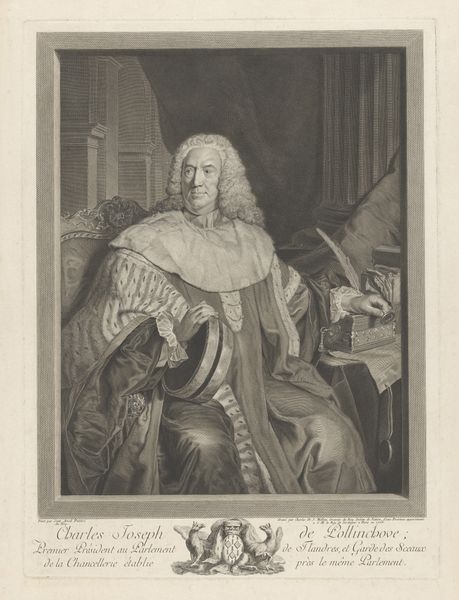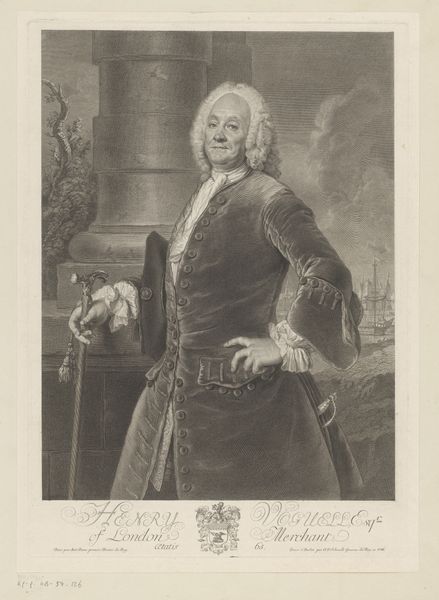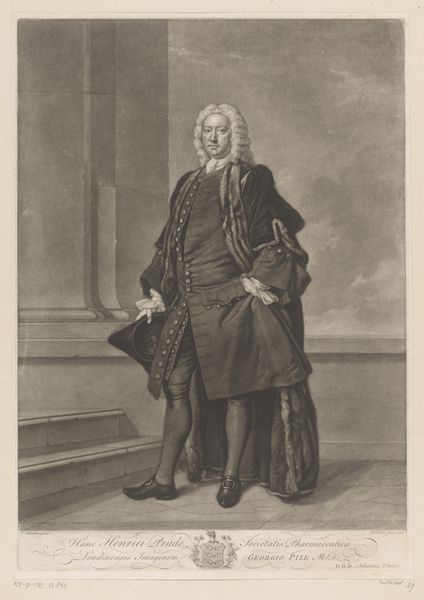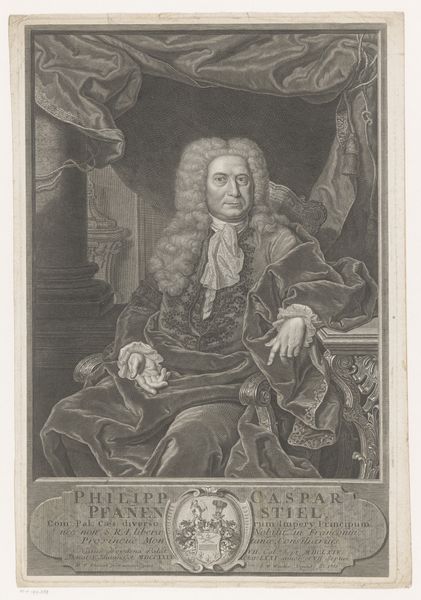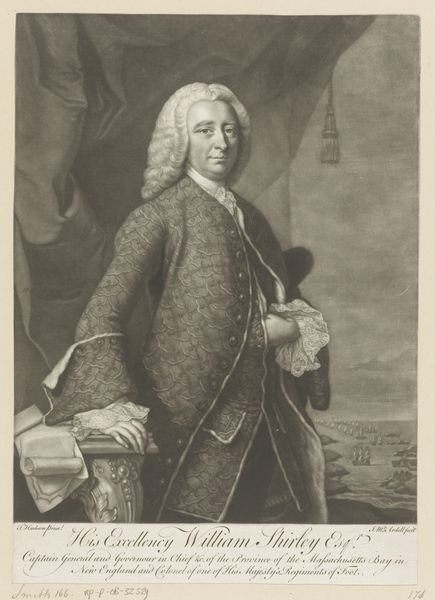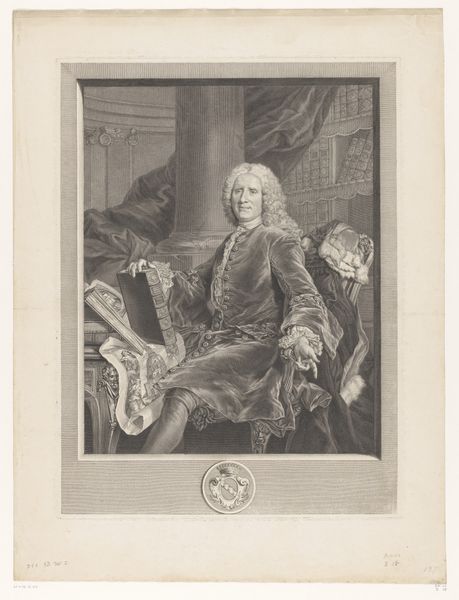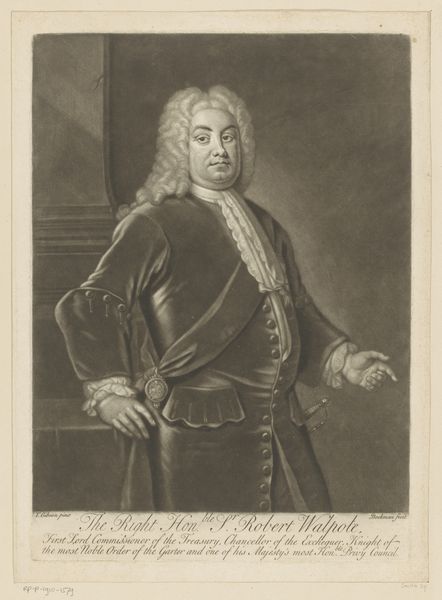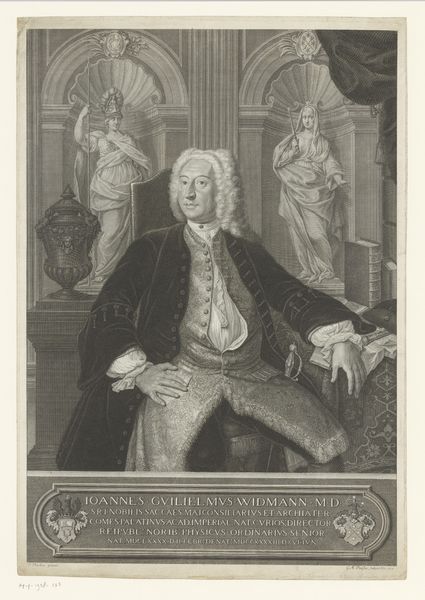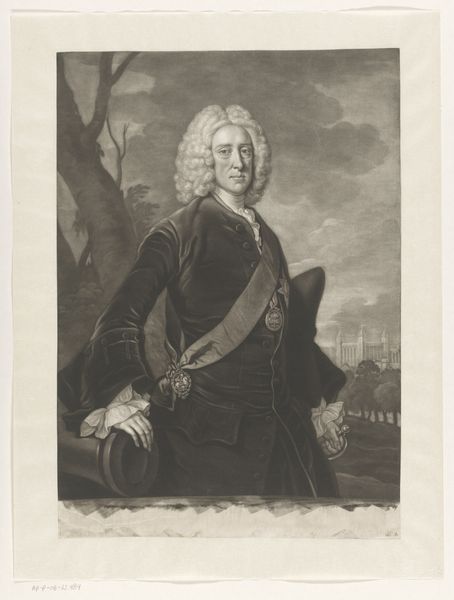
Dimensions: height 505 mm, width 353 mm
Copyright: Rijks Museum: Open Domain
Curator: This is an engraving from 1788 entitled "Portret van Robert Walpole." It's currently held here at the Rijksmuseum. Editor: My initial impression is that this is imposing! It has a grand and weighty feel, achieved through the tonal range, a classical backdrop, and of course the dignified pose of the subject. Curator: Indeed. James Watson has presented Walpole in a calculated and authoritative manner, the baroque aesthetics really emphasising his power and status. Editor: The detail certainly supports that. Take, for instance, the richly adorned chair with its emblem; these motifs speak directly to Walpole’s high office, and that sense of responsibility. Curator: Absolutely. Symbolism plays a key role here, doesn't it? He is wearing ornate garments, and holding a document suggesting important administrative responsibilities. Even the classical statue in the background suggests a lineage of power. Editor: It feels a little formulaic in its presentation of status, adhering perhaps a little too closely to established visual tropes. It would be nice to see Walpole presented as more of a human being. Curator: That is an astute observation. However, I am also intrigued by how Watson used line and form to create a very striking image; there's a satisfying structural integrity to the portrait which elevates it beyond a simple likeness. Note especially the contrasting textures within the monochromatic framework. Editor: Yes, that attention to line and contrast gives the portrait real presence. The composition directs the viewer’s eye, certainly reinforcing his importance. Ultimately, a symbolic presentation that fits within a broader historical narrative. Curator: Yes, considering the cultural context certainly amplifies its meaning beyond just a composition exercise. Editor: It allows me to reflect on Walpole’s place in history and to better decode some of his authority. Curator: For me, it provides further evidence of the technical and creative possibilities inherent in printmaking.
Comments
No comments
Be the first to comment and join the conversation on the ultimate creative platform.
